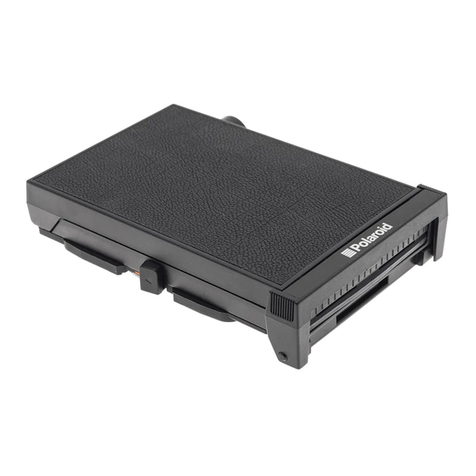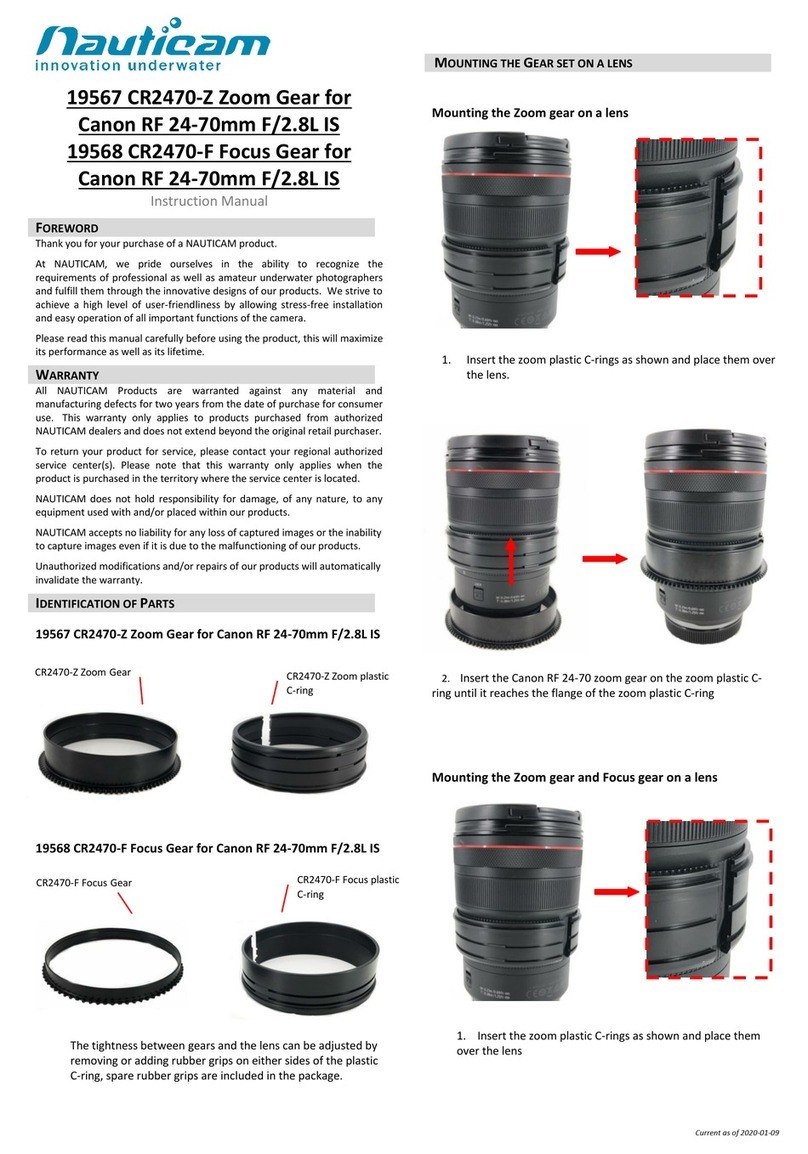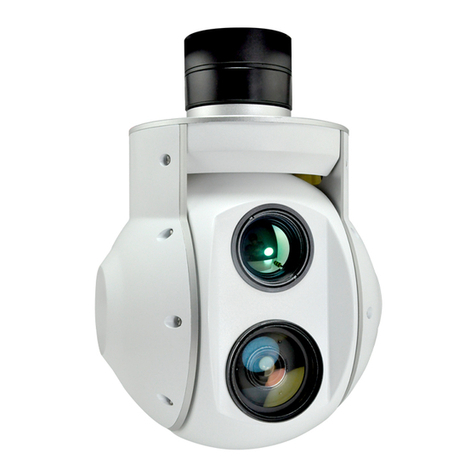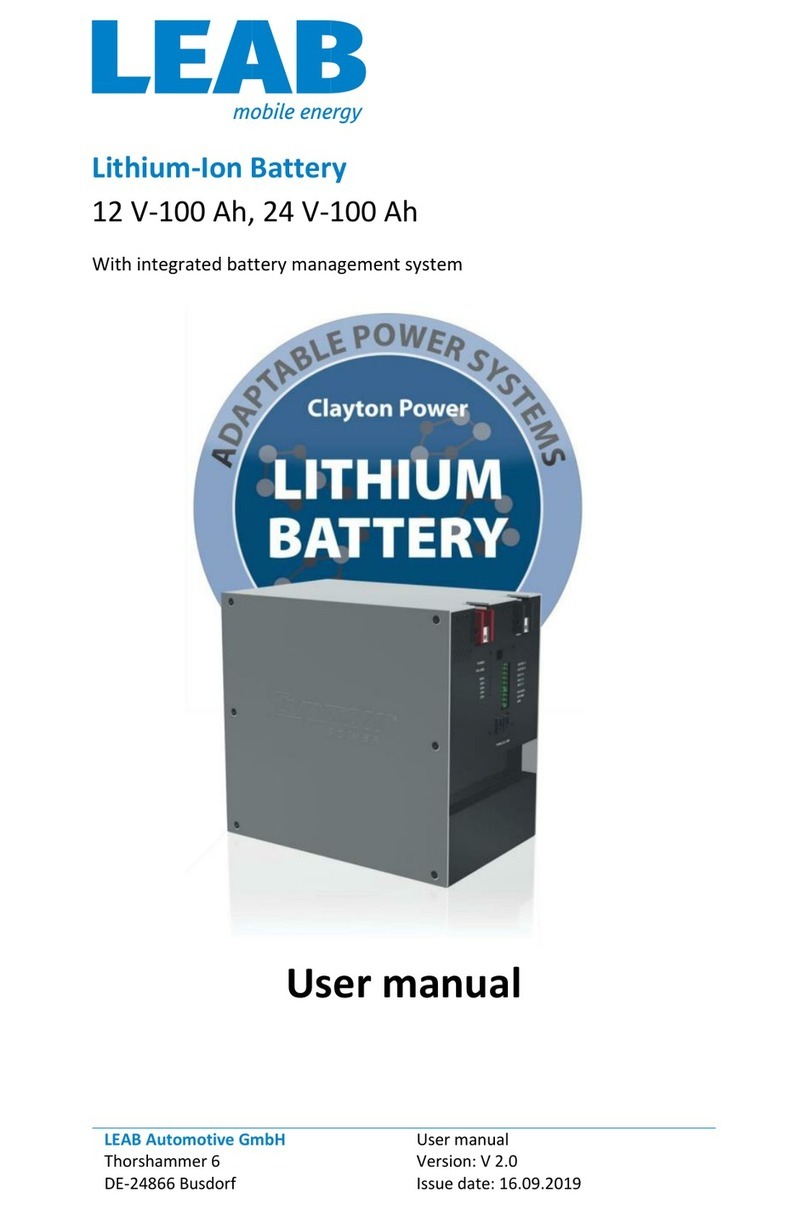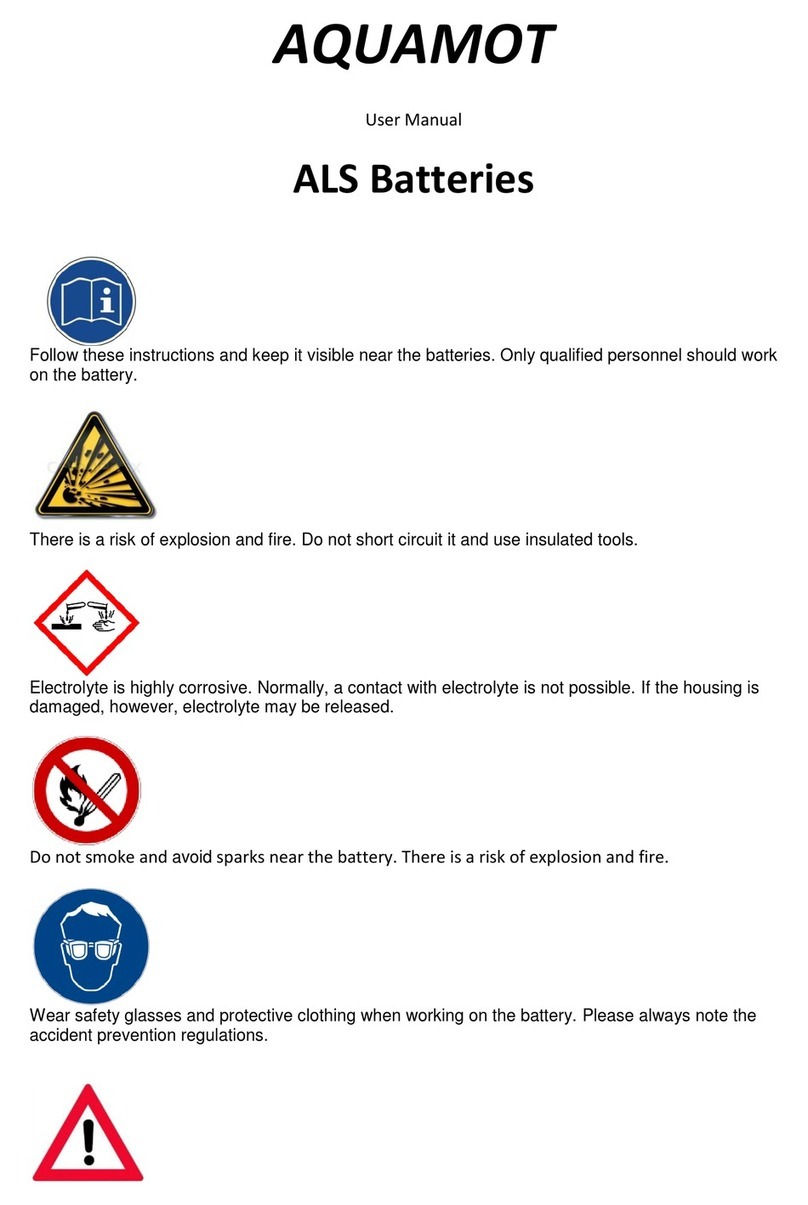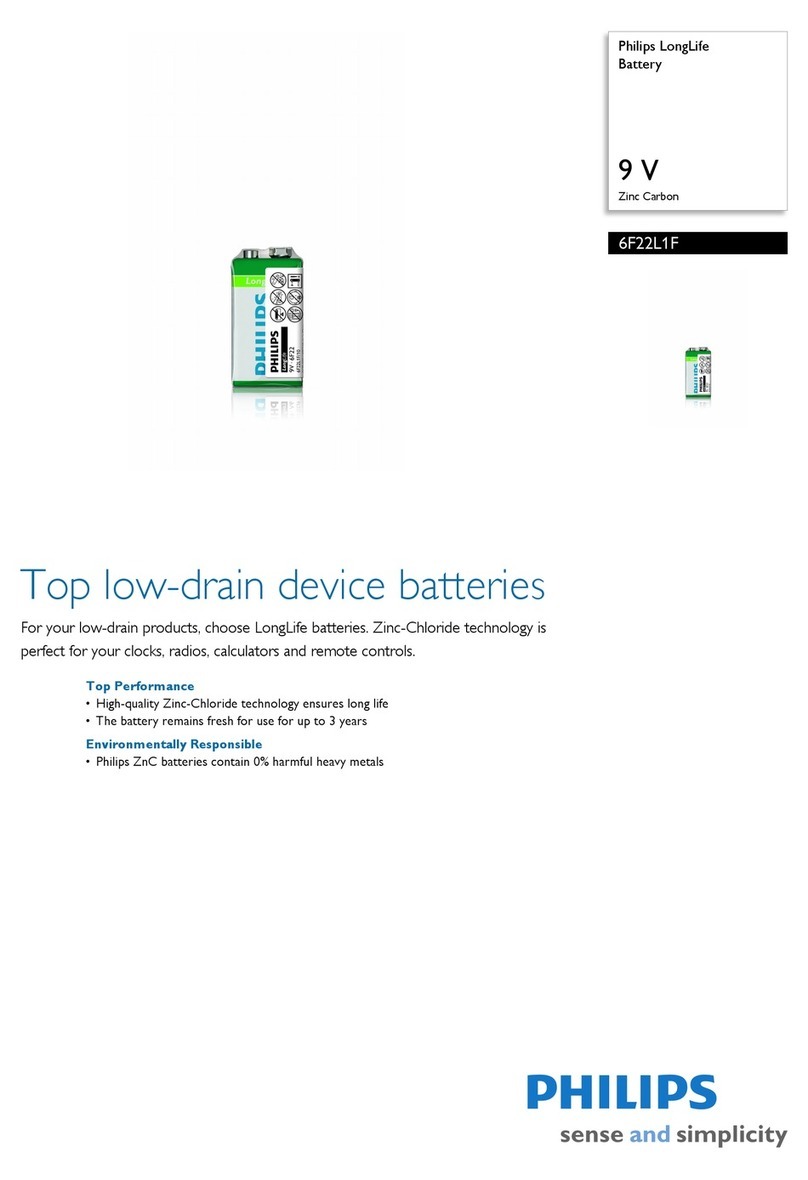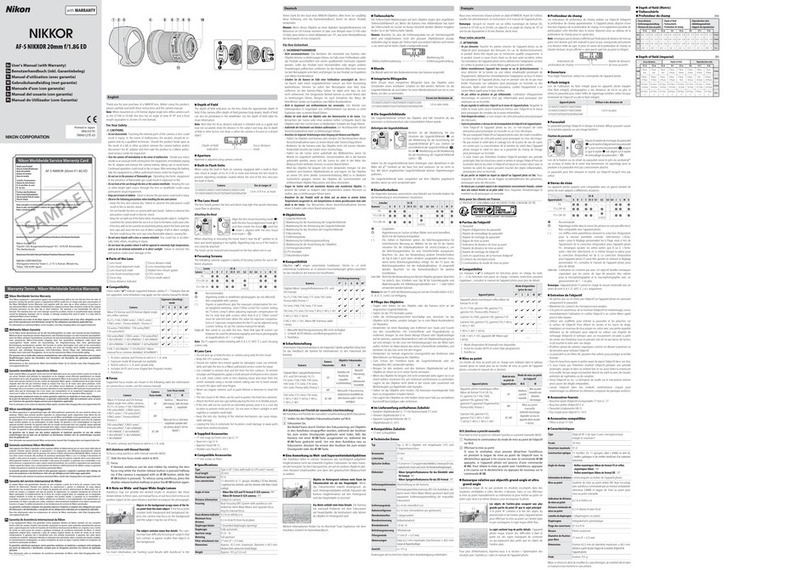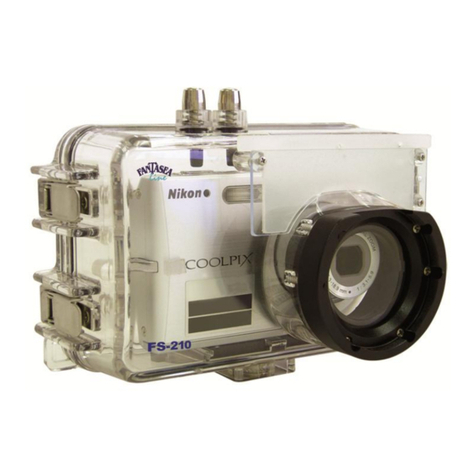Larson Electronics BTT-LON-207WH-SMBUS User manual

BTT-LON-207WH-SMBUS
Larson Electronics, LLC Phone: (800) 369-6671 Fax: (903) 498-3364 www.larsonelectronics.com 1 of 4
Rechargeable Lithium-ion Battery
Military Grade Construction - Dual LCD Display - SMBus Interface
Instruction Manual
Thank you for your purchase of the Larson Electronics BTT-LON-207WH-SMBUS.
WARNING:
READ CAREFULLY BEFORE INSTALLING FIXTURE. RETAIN THESE INSTRUCTIONS FOR FUTURE REFERENCE.
CRITICAL SAFETY INSTRUCTIONS:
•INSTALLATION SHOULD ONLY BE CONDUCTED BY A QUALIFIED ELECTRICIAN IN ACCORDANCE WITH NEC AND ANY
RELEVANT LOCAL BUILDING CODES.
•RISK OF FIRE OR ELECTRIC SHOCK. FIXTURE INSTALLATION REQUIRES KNOWLEDGE OF FIXTURE'S ELECTRICAL
SYSTEMS. IF NOT QUALIFIED, CONTACT A QUALIFIED ELECTRICIAN.
•BE CERTAIN ELECTRICAL POWER IS OFF BEFORE AND DURING INSTALLATION AND MAINTENANCE.
•MAKE SURE THE SUPPLY VOLTAGE IS THE SAME AS THE FIXTURE'S RATED VOLTAGE.
•TO PREVENT WIRING DAMAGE OR ABRASION, DO NOT EXPOSE WIRING TO EDGES OF SHEET METAL OR SHARP
OBJECTS. SUITABLE FOR DAMP LOCATIONS.
The BTT-LON-207WH-SMBUS Rechargeable Lithium-ion Battery is designed to be used in a wide array of portable applications
where military-grade power is required. This rechargeable battery is used in a wide range of military applications including robotics,
AUVs, UUVs and military communications.
The BTT-LON-207WH-SMBUS is a heavy duty lithium-ion battery with military grade construction for deep cycle use. This durable li-
ion battery contains two independent battery sections which can be connected in a series or parallel. In 30V series mode, the
battery operates between 33.6V and 24.0V (28.8V average) and delivers 7.2Ah. In 15V parallel mode, the battery operates between
16.8V and 12.0V (14.4V average) and delivers 14.4Ah.
The BTT-LON-207WH-SMBUS features dual LCD displays which indicate the state of charge for each section. This smart circuit
technology allows compatible devices and chargers to communicate with the battery via its SMBus v1.1 compliant interface.

ABSTRACT
This white paper has been written to address common questions that result from use of the Larson Electronics SMBUS family of
battery products—the most common questions being those that regard implementation of the communication protocol, SMBus.
OVERVIEW
SMBus V1.1 is a derivative of the popular I2C® bus developed by Phillips, which is a simple-to-use, three-wire (ground, clock, and
data) serial-bus architecture. Though the I2C bus has many popular uses, it is primarily used for low-to-moderate serial speed
communication on board-level designs that require a peripheral-to-processor communication link such as remote-temperature sensors.
I2C VERSUS SMBus
Several differences exist between the standard I2C bus and SMBus, the largest being the maximum speed. While SMBus maximum
speed is 100 kHz, I2C can be as fast as 400 kHz or higher. As with most network architectures, I2C will negotiate down to slower clock
speeds to communicate with lower-speed devices such as SMBus.
Another key difference between the two busses is addressing scheme. That is, SMBus does not truly allow addressable items as with
most I2C devices. Instead, SMBus assigns id 11 (0x0B) to batteries on the bus, and other devices get the next-available ID on the bus
as communication is established. This being the case, addresses for battery IDs can occur at random when multiple batteries are on
the same bus. This leads to difficulty in physically identifying which battery is communicating from which address.
Making addressing difficulties worse, the addresses will change dynamically every time batteries are removed from the device or the
device is fully discharged and powered down. This is not an entirely bad situation, as there are several multiplexer (MUX) devices
available from various vendors which can help identify each data and clock line. Using a MUX will enable the designer to identify
specific batteries repeatably and reliably without worry of battery addressing changes.
BTT-LON-207WH-SMBUS
Larson Electronics, LLC Phone: (800) 369-6671 Fax: (903) 498-3364 www.larsonelectronics.com 2 of 4
OPERATION
Once the SMBus communication protocol is established, information between the host device and the battery can be exchanged.
“Smart” batteries have several broadcast modes, such as charge/current request and error/alert notifications. The fields typically
available to a host device are defined in the Smart Battery Data (SBData) Specification, V1.0. This specification lists the parameters
required by smart batteries to be compliant.
Several important parameters used by the host device to monitor battery condition and status are voltage, current, remaining capacity,
and absolute state-of-charge. Further, the battery can communicate remaining run time to the host to warn of impending power loss
due to battery discharge through low-battery condition alarms. Typically, the reported remaining capacity and run-time information has
temperature and discharge rate compensation to account for battery performance and internal impedance.
DESIGN CONSIDERATIONS
A noteworthy design consideration is that the use of SMBus and I2C buses requires a low-capacitance path. If these communication
protocols are utilized across a cable, distance must be kept to a minimum, which typically less than six feet. Using shielded cable or
twisted-pair cable may assist in providing more reliable communication. Several devices are available that can extend and “square” off
the communication waveforms to fight high capacitance or longer cable runs and thus create reliable communication links.

Another overlooked design consideration is communicating with a battery that is used in a series application such as shown in Figure
1. This is an issue because data and clock for SMBus are relative to the ground point of the circuit, and batteries utilized in series
applications shift the ground of the higher-voltage section. That is, the actual ground point is equal to the voltage of the lower-battery
section (10-16.8V DC on a UBBL10/13) and continually shifts throughout the battery discharge. This requires the use of an isolated
input for proper communication or a shorting path will exist to system ground.
Figure 1: Batteries Shown in Series Configuration
Several companies make optical and inductive isolators for I2C and SMBus, including NXP Semiconductors and Analog Devices, Inc.
It is good practice to add some ESD protection and filtering to the battery communication interface.
Larson Electronics, LLC Phone: (800) 369-6671 Fax: (903) 498-3364 www.larsonelectronics.com 3 of 4
BTT-LON-207WH-SMBUS

Most batteries will tolerate 3.3V to 5V pull-up communication levels. A specific design may require this voltage to vary, especially if
mixing I2C and SMBus on a single communication bus. This scenario may require a voltage-level translator in the design if operating
on a lower voltage bus (i.e., 1.8V).
ADDITIONAL INFORMATION
Helpful links for further SMBus and related information are listed below:
www.smartbattery.org/ sbs-
forum.org/
www.analogdevices.com
www.linear.com
www.nxp.com
www.ti.com
For additional information on Larson Electronics products and services, please visit: www.larsonelectronics.com
Larson Electronics, LLC Phone: (800) 369-6671 Fax: (903) 498-3364 www.larsonelectronics.com 4 of 4
BTT-LON-207WH-SMBUS
USE AND CARE
Unauthorized modification may impair the function and/or safety of this device and could affect the life of the equipment.
Always check for damaged or worn out parts before using the device. Store it in a secure place out of the reach of
children when not in use. Inspect for good working condition prior to storage and before re-use.
REPLACEMENT PARTS
The BTT-LON-207WH-SMBUS is designed to provide years of reliable performance. Should the need for replacement
parts arise, please contact Larson Electronics.
THESE INSTRUCTIONS MAY NOT COVER ALL DETAILS OR VARIATIONS OF THIS PRODUCT FOR YOUR EQUIPMENT OR INSTALLATION REQUIREMENTS.
SHOULD FURTHER INFORMATION NOT COVERED BY THESE INSTRUCTIONS BE REQUIRED, PLEASE CONTACT LARSON ELECTRONICS BY EMAIL AT
SALES@LARSONELECTRONICS.COM OR BY PHONE AT 1-800-369-6671 FOR FURTHER ASSISTANCE.
PLEASE VISIT LARSONELECTRONICS.COM FOR WARRANTY AND RETURN INFORMATION.
Table of contents
Other Larson Electronics Camera Accessories manuals
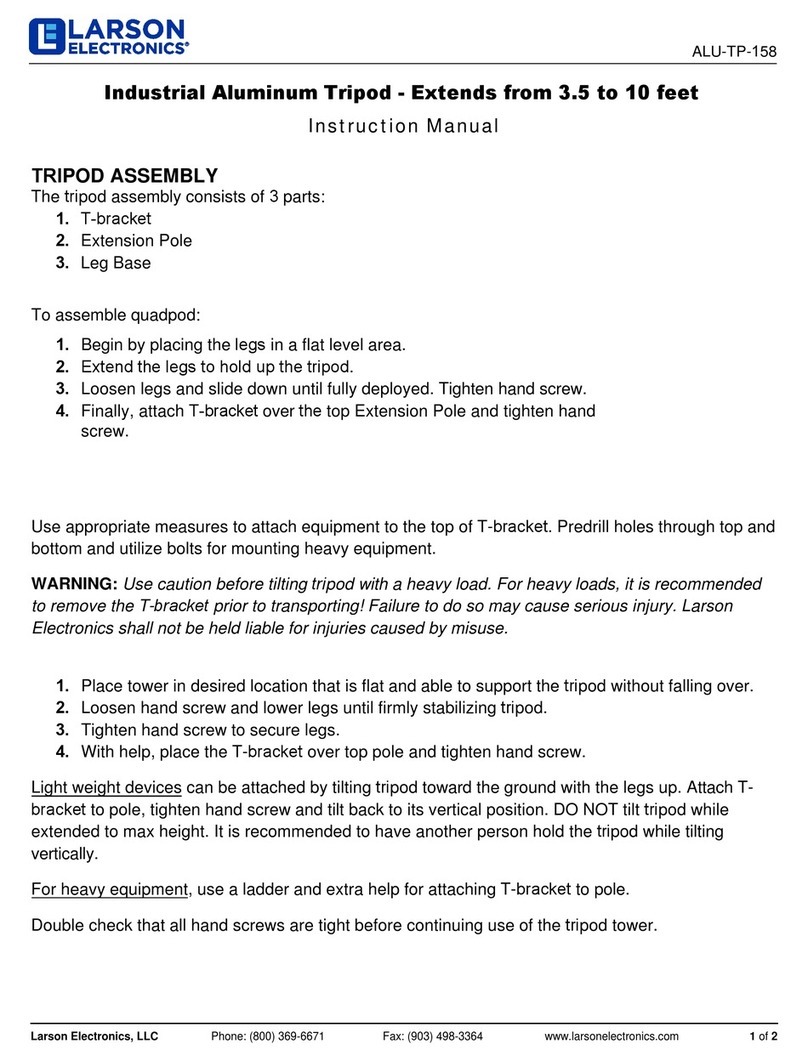
Larson Electronics
Larson Electronics ALU-TP-158 User manual
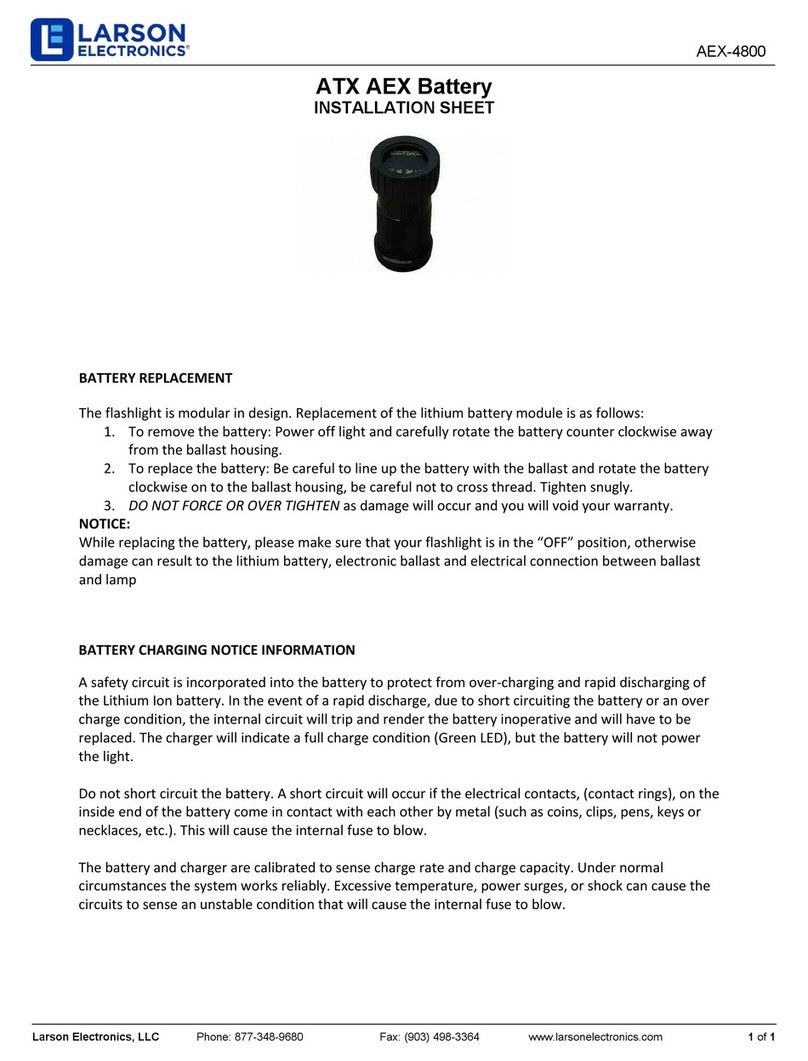
Larson Electronics
Larson Electronics AEX-4800 Assembly instructions

Larson Electronics
Larson Electronics LMP-F Series User manual

Larson Electronics
Larson Electronics IND-MD-DF-ESF SP0104 Series User manual

Larson Electronics
Larson Electronics EXP-EXT-3W-SP0104 User manual
Popular Camera Accessories manuals by other brands
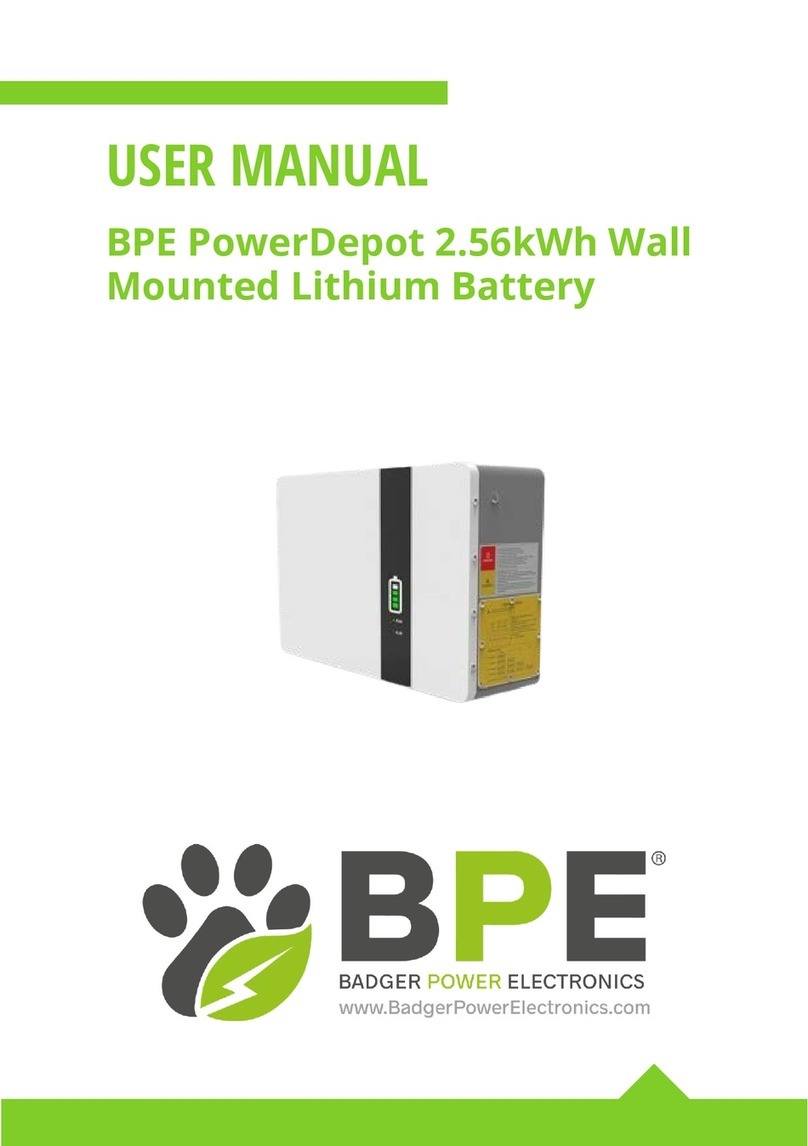
BPE
BPE PowerDepot BPE-LFP-2.56-ID user manual

Panasonic
Panasonic AJ-HVF20P Service manual

Kodak
Kodak EASTMAN 2366 Technical data
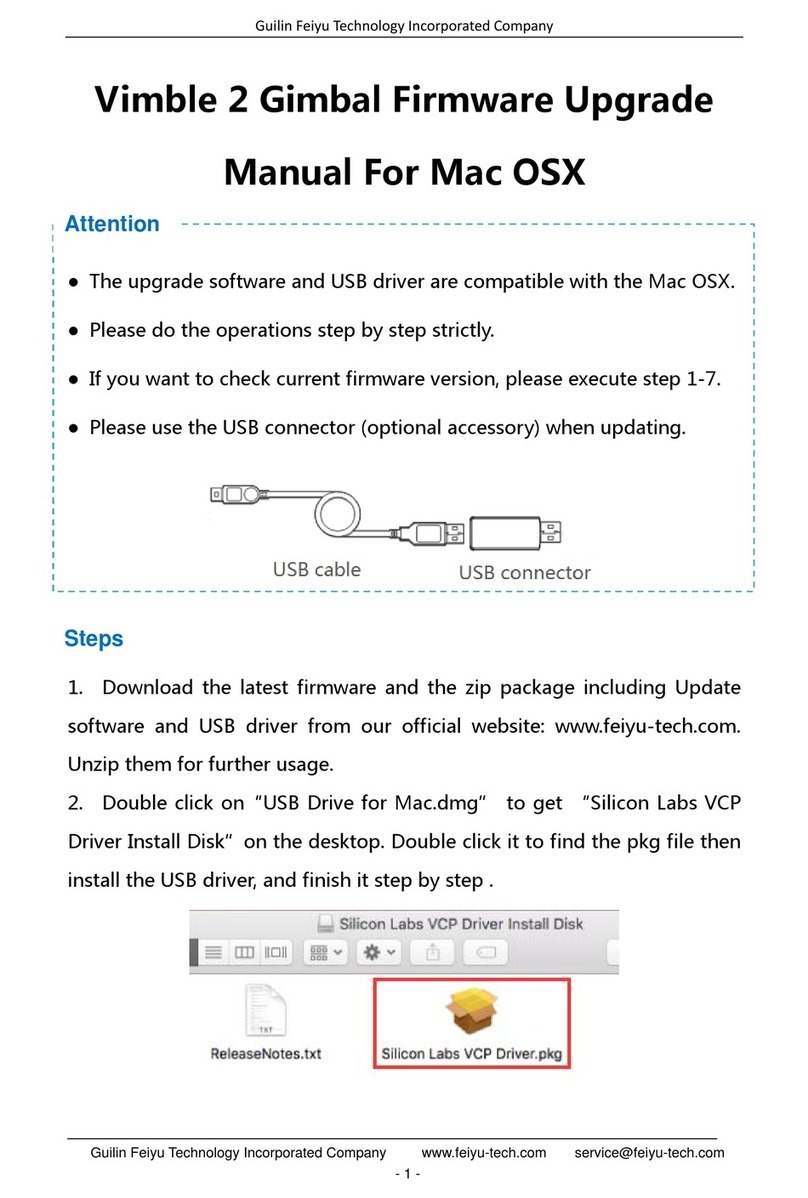
Guilin Feiyu Technology
Guilin Feiyu Technology Vimble 2 manual

InoTec
InoTec CPS 220/20/J-SV Mounting and operating instructions
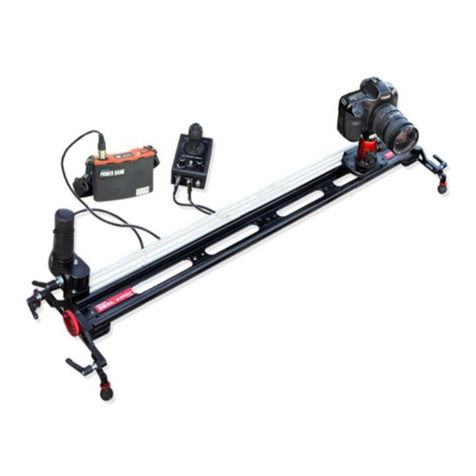
PROAIM
PROAIM P-ZL-S3 Setup and Operational Manual

